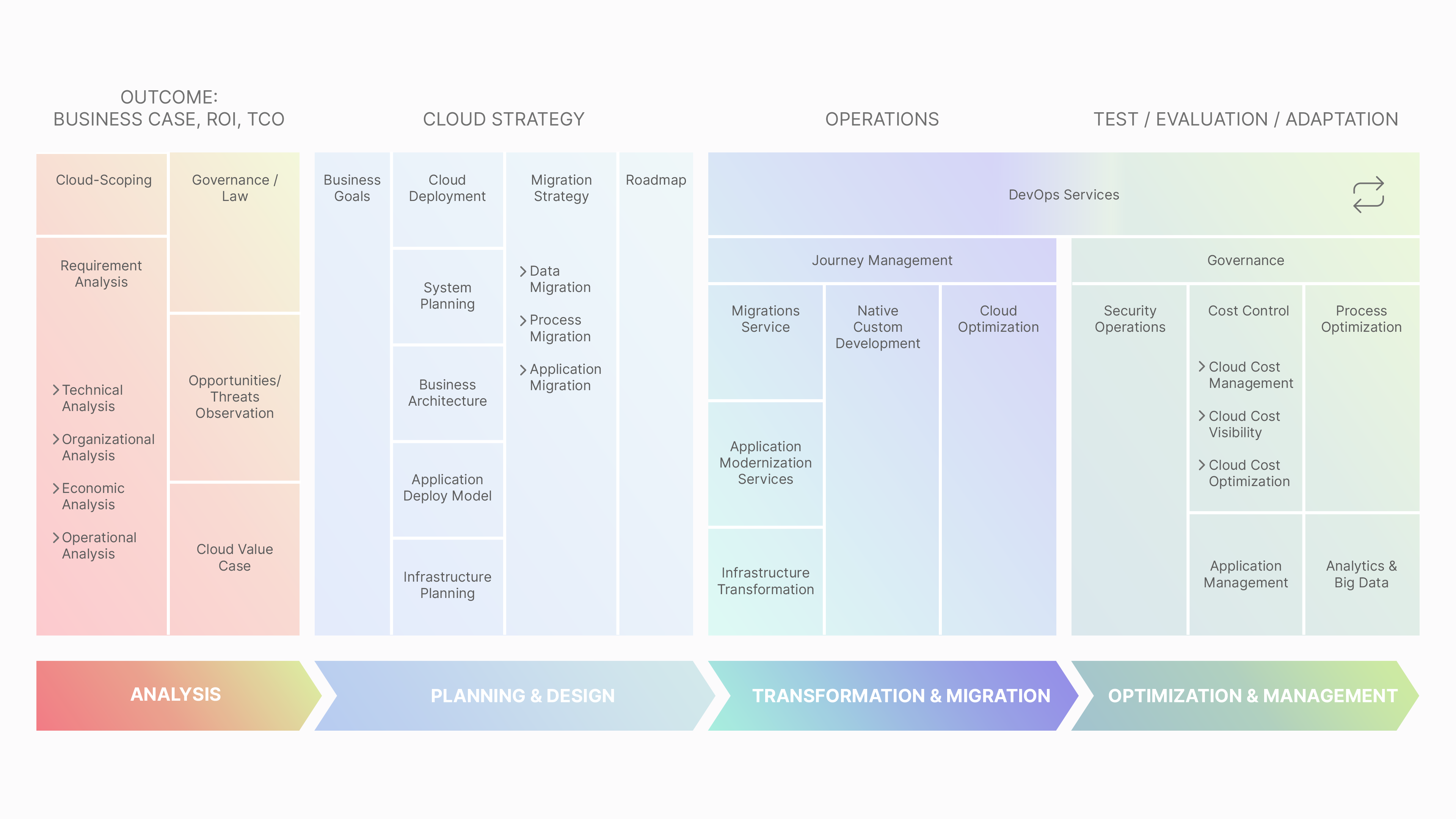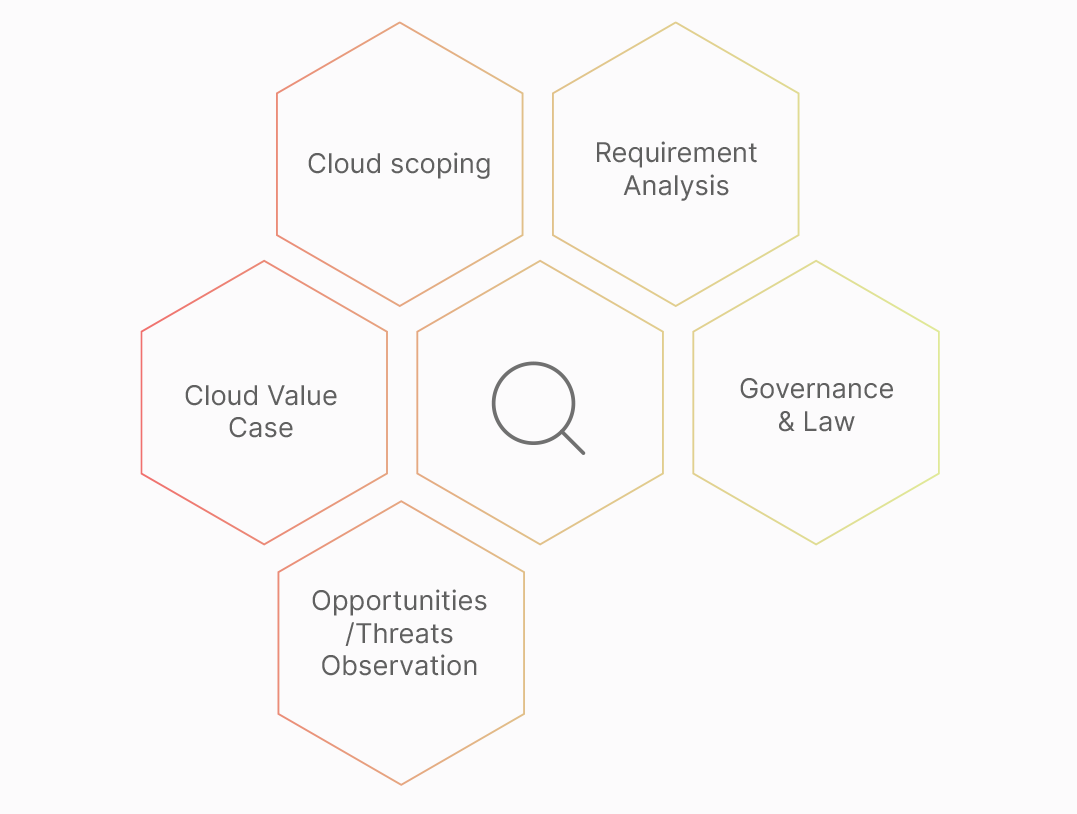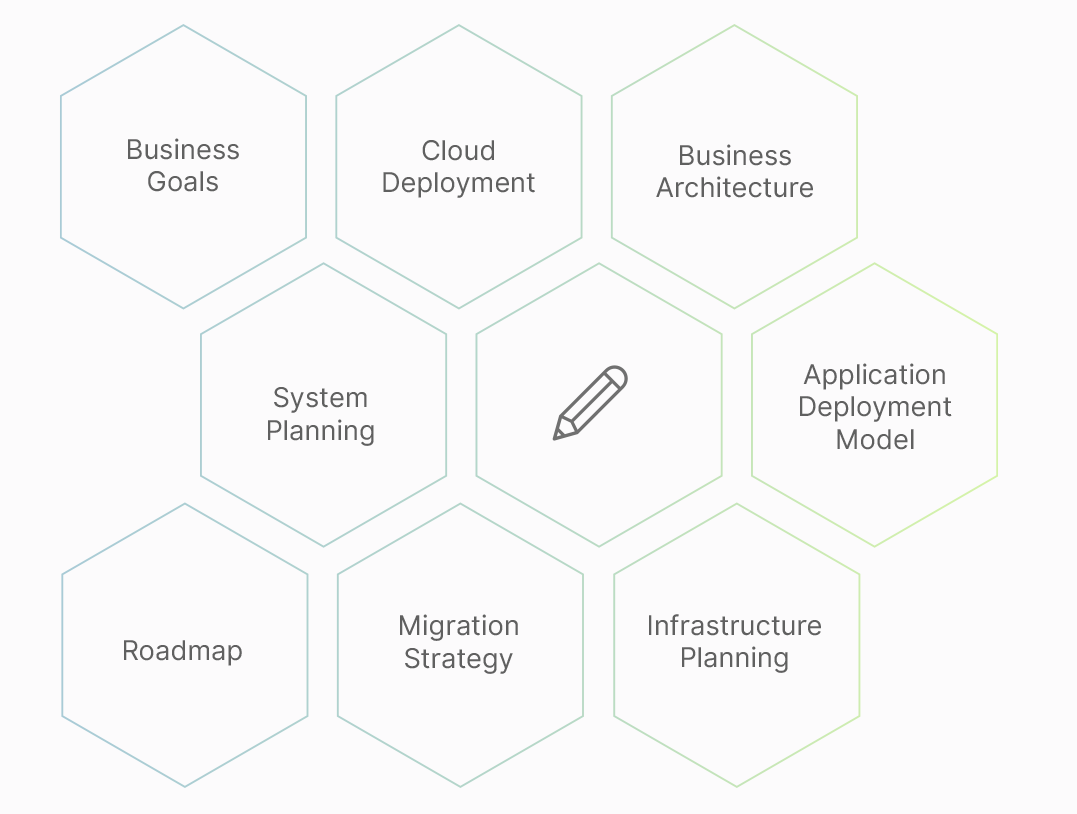
The approach for cloud transformation

Insights on the Cloud Consulting Framework from Qvest
It is important to know that a cloud solution is not everything, it is necessary to integrate the solution into the existing system landscape and business model. To meet this challenge, it is essential to own and apply a well-founded process model.
The framework is based on individual services that initiate, analyze, design, execute, migrate and optimize a cloud transformation. To understand a transformation means a complete re-evaluation and revision of a company’s information technology to improve efficiency and delivery in a digital economy.
Cloud Consulting Framework of Qvest
IT transformation is the foundation of a company’s larger digital transformation strategy and is typically led by senior executives. It can involve changes to network architecture, hardware, software, IT service management, and the way data is stored and accessed. Informally, IT transformation can be described as “tearing down and replacing”. It also involves the adaptation of work practices, workflows and employee attitudes.

Even if these activities are carried out independently, it is still advisable to use certain solutions in combination to achieve the greatest added value and to enable an efficient project process. For example, it would make much more sense to conduct a requirement analysis before creating a Cloud Value Case in order to identify and interpret the relevant requirements and factors, so that a sound basis is created on which the Cloud Value Case can be realistically developed. In the following we will now go into more detail and explain how the Cloud Consulting Framework of Qvest works.

Analysis
The first step of the Cloud Consulting Framework is the analysis phase, this provides information about the basics of the transformation process and must therefore be carried out conscientiously to avoid future problems.
First, we start with the development of a rough Cloud Scoping, based on the customer’s intentions and business strategies. Afterwards we gather the necessary information, specifications and requirements through business, economic, technical and operational analysis. From these we can derive the relevant opportunities and threats and make them available for future consideration. In addition, we need to understand and integrate the company’s security strategy, policies and local law, and perform opportunity and threat assessment to create a Cloud Value Case.
The outcome of this phase is the identification of a business model or certain business cases which affect the cloud transformation, as well as a return on investment or a total cost of ownership analysis.

Design
In the second phase we have to develop a strategy, on the basis of the findings from the previous phase. As a result of the strategy development, we must operationalize the business objectives and align them with the requirements and specifications. Once we have defined the basic and relevant issues, we need to choose the right cloud model such as Public, Private and Hybrid Cloud and application models such as SaaS, PaaS or IaaS. This selection is crucial for the purpose and case of application because this decision is the cornerstone for a successful or failed project completion. This decision has a massive impact on the subsequent subphases of the planning and design phase.
The next step in the system planning part is the creation of the future virtual infrastructure plan with a focus on systems and processes and the usage behavior e.g. it describes where containers are located.
The last and at least one of the most important sub-steps is the selection of the migration strategy. Based on this information and decision a roadmap for further transformation and migration is created, which defines the following measures. Finally, the result of this phase is a complete cloud strategy.
The last and at least one of the most important sub-steps is the selection of the migration strategy. Based on this information and decision a roadmap for further transformation and migration is created, which defines the following measures. Finally, the result of this phase is a complete cloud strategy.



